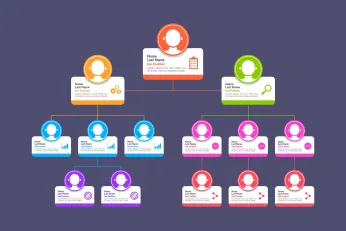الدليل الشامل لمعيار المحاسبة 606: الحاجة إلى الامتثال للاعتراف بالإيرادات
ASC 606 هو المعيار الجديد للاعتراف بالإيرادات. تناقش هذه المدونة المعيار والنموذج المكون من خمس خطوات ومعايير الاعتراف بالإيرادات.
في هذه الصفحة
المعاملات التجارية تنطوي على نقل الاعتبارات النقدية في مقابل نقل السلع أو الخدمات. المقابل النقدي المستلم هو إيرادات الأعمال التجارية.
هل تعرف متى يجب على الشركات الاعتراف بهذه الإيرادات؟ كانت الشركات تتبع ممارسات مختلفة لإثبات الإيرادات. وقد أثر ذلك على التقارير المالية وكشوف حسابات المنظمات وأدى إلى تعقيدات قانونية.
نظرا لأن الاعتراف بالإيرادات جزء مهم من الأعمال التجارية ، فقد تم تقديم معيار جديد للاعتراف بالإيرادات في عام 2018. هذا هو تدوين معايير المحاسبة (ASC) 606 ، الذي حل محل ASC 605. توضح المقالة أدناه ماهيتها ، وعلى من تنطبق ، وطريقة الاعتراف بالإيرادات.
ما هو ASC 606؟
ASC 606, or Accounting Standards Codification 606, is a revenue recognition standard. It sets clear rules for how companies recognize revenue from customer contracts. Revenue is recognized when control of goods or services is transferred to the customer.
ASC 606 provides a comprehensive framework for accurate revenue recognition. It helps ensure consistency in financial reporting and transparency in financial statements. Companies must disclose detailed information about revenue streams, deferred revenue, and performance obligations.
The Financial Accounting Standards Board (FASB) issued ASC 606 in May 2014. It applies to companies following Generally Accepted Accounting Principles (GAAP). Public companies adopted this standard in 2017, while private companies and non-profits followed in 2018.
ASC 606 aims to improve financial health visibility by aligning revenue recognition processes across industries. It covers aspects like transaction price, standalone selling price, and significant financing components in customer contracts.
لماذا تم تقديم ASC 606؟
أسباب إدخال ASC 606 مدرجة أدناه:
- يهدف ASC 606 إلى توفير إطار عمل يمكن من خلاله الاعتراف بالإيرادات بشكل أكثر اتساقا.
- يهدف مجلس معايير المحاسبة الدولية ومجلس معايير المحاسبة المالية إلى تحديث معايير إثبات الإيرادات الحالية لجعلها أكثر ملاءمة عبر الصناعات.
- ولوحظت اختلافات في المحاسبة المتعلقة بإيرادات المعاملات المماثلة عبر الصناعات التي تحتاج إلى تغيير.
- ولم يوفر الاختلاف في الإجراءات المحاسبية أساسا لمقارنة النتائج من وجهة نظر أصحاب المصلحة.
- مع إدخال ASC 606 ، يعتزم مجلس معايير المحاسبة الدولية ومجلس معايير المحاسبة المالية إنشاء مبادئ توجيهية لحساب الإيرادات للأغراض الضريبية.
However, there is a significant difference between ASC and IFRS.
IFRS 15 vs. ASC 606: What’s the difference?
ASC 606 and IFRS 15 are similar. Both offer a clear framework for revenue recognition in customer contracts. They focus on identifying performance obligations and recognizing revenue when these obligations are met by transferring goods or services.
Both standards aim to ensure accurate revenue recognition in financial statements. This gives a clear picture of financial performance and helps stakeholders understand the company's cash flow and revenue streams better.
Here’s a comparative table.
أسبكت | ASC 606 | IFRS 15 | Key Differences |
Collectability Threshold | Requires a higher probability of collection, setting the threshold at 75-80%. | Sets a lower threshold at 50%, requiring only that collection is “more likely than not.” | ASC 606 demands greater certainty about payment collection compared to IFRS 15. |
Shipping and Handling Disclosure | Treats shipping and handling as fulfilment activities but allows for separate presentation in financial statements. | Does not specifically mandate separate disclosure of shipping and handling fees. | ASC 606 emphasizes separate disclosure more than IFRS 15, which offers less guidance on this aspect. |
Contract Costs | Allows broader capitalization of incremental costs incurred in obtaining a contract (e.g., sales commissions). | Applies more restrictive criteria for recognition, requiring costs to be directly attributable and expected to generate future economic benefits. | IFRS 15's stricter criteria may lead to fewer costs being capitalized compared to ASC 606, affecting financial statement comparability. |
Sales Taxes | Generally requires exclusion of sales taxes collected from customers from the transaction price. | Offers flexibility, allowing companies to choose whether to present sales taxes as part of revenue or separately. | ASC 606 has a prescriptive approach, while IFRS 15 allows for varying practices regarding sales taxes, potentially affecting comparability of reported revenue figures. |
License Renewals | Explicitly prohibits revenue recognition for license renewals before the renewal period begins. | Allows for potentially earlier revenue recognition if the customer can utilize and benefit from the license. | IFRS 15 permits earlier revenue recognition for license renewals compared to the more restrictive approach under ASC 606. |
Five steps for ASC 606 revenue recognition
Revenue recognition can be tricky for subscription businesses. Changes like refunds, disputes, and prorations add complexity. Following these steps helps companies recognize revenue accurately under the ASC 606 standard.
1. Identify the customer contract
A valid contract must meet these criteria:
- Both parties approve the agreement and commit to it.
- The rights and payment terms for goods or services are clear.
- The contract impacts future cash flows.
- The business expects to collect payment.
2. Identify performance obligations
List every promise to deliver goods or services. Each distinct performance obligation must add value and be independently transferable.
3. Determine the transaction price
Calculate the total price, including cash, noncash items, or discounts. Adjust for upgrades, price concessions, and variable consideration.
4. Allocate the transaction price
Divide the price among performance obligations based on their relative standalone selling price. For subscriptions, this can be challenging but ensures deferred revenue is accurate.
5. Recognize revenue as obligations are met
Revenue is recognized when goods or services are delivered. For single obligations, like a custom sofa, recognize revenue on delivery. For ongoing obligations, like software subscriptions, attribute revenue to each period of service.
These steps align with ASC 606 and improve financial reporting, helping businesses maintain compliance with accounting standards.
لماذا يجب أن يمتثل عملك للاعتراف بالإيرادات؟
يؤثر ASC 606 على سياسات المؤسسة بعدة طرق. تشير المؤشرات التالية إلى سبب أهمية الامتثال للمعيار:
1. المتطلبات القانونية
من المتطلبات بموجب القانون أن تمتثل كل شركة ل ASC 606 ، بغض النظر عما إذا كانت منظمات خاصة أو عامة أو غير هادفة للربح. أنت ملزم بالمعيار إذا كان عملك متورطا في عقد لنقل السلع أو الخدمات مقابل نقدي. لا توجد استثناءات لهذا بموجب القانون.
2. الوضوح المالي
يعد أداء الشركة ومركزها المالي من المعلومات المهمة للعديد من أصحاب المصلحة. إنهم مهتمون بمعرفة الإيرادات المكتسبة في فترة ما.
الامتثال ل ASC 606 يزيل التناقضات في تقارير الإيرادات ويعطي الوضوح للجميع. أصبحت مقارنة الإيرادات عبر الصناعات أسهل مع هذا المعيار الجديد.
3. الفطنة التجارية
تفيد طريقة التعرف على الإيرادات الجديدة مؤسستك من خلال توفير نظرة عميقة على أعمال المؤسسة. يجب أن يكون لدى الشركة معرفة محددة بوضعها المالي بحيث يمكن إجراء تنبؤات بشأن التدفق النقدي بدقة. الإيرادات التي لم تتحقق بعد لا يتم احتسابها هنا ؛ لذلك ، فإنه يعطي رؤية صحيحة للوضع المالي للشركة.
4. تحديد المبالغ المستردة
يصبح تحديد المبالغ المستردة ومعالجتها ، خاصة للشركات القائمة على الاشتراك ، أسهل مع الاعتراف بالإيرادات. يؤكد ASC 606 على الاعتراف بالإيرادات للخدمات المكتملة ، وبالتالي إذا تم إلغاء الاشتراك في منتصف الطريق ، يتم إصدار استرداد للجزء من العقد الذي لم يتم تنفيذه.
5. الأغراض الضريبية
وفقا لمعايير المحاسبة الدولية ومجلس معايير المحاسبة المالية (FASB) ، يعد الامتثال لمعيار ASC 606 ضروريا للأغراض الضريبية أيضا. لا يمكن الإبلاغ عن المبلغ الصحيح للضرائب إلا عندما يتم الاعتراف بالإيرادات دون أي عيب. وبخلاف ذلك، قد تدعو السلطات الضريبية إلى إجراء تحقيقات.
معايير التقييم للاعتراف بالإيرادات
يتبع الاعتراف بالإيرادات المعايير المذكورة أدناه:
1. دليل على الترتيبات من الناحية المالية
يجب أن يكون هناك دليل واضح في شكل عقد مكتوب بين العميل والشركة. يجب أن تنص الاتفاقية على أن العميل ينوي شراء المنتج أو الخدمة من الشركة مقابل مقابل نقدي محدد.
2. تسليم البضائع
وفقا للعقد ، يجب تسليم المنتجات أو الخدمات المذكورة. لا يمكن حساب إثبات الإيرادات إلا عند اكتمال التسليم بالكامل. كانت هناك تعقيدات قبل ASC 606 ، مع تقييم الإيرادات مع اختلاف ممارسات الصناعة. ولكن بعد ASC 606 ، يعد تسليم البضائع أيضا أحد المعايير المهمة للاعتراف بالإيرادات.
3. السعر المحدد من قبل البائع
The price is fixed, and the buyer agrees to the same by entering into a contract. There can be no two views on this since it is only based on the contract. Negotiations, if any, can be done before the contract is finalized. The seller fixes the price, and the contract is executed for the same price.
4. Reasonable assurance of collectability
Reasonable assurance is mentioned as a criterion to make a provision for uncollectible amounts in certain cases. This happens when the seller observes that the collectability of debt is doubtful. In such cases, cash-basis transactions are allowed to maintain reasonable assurance of collection.
عقوبات عدم الامتثال
تتم مراقبة الشركات لعدم امتثالها ل ASC 606 ، وقد تؤثر الهفوة عليها بشكل كبير. يضع مجلس معايير المحاسبة الدولية ومجلس معايير المحاسبة المالية (FASB)، إلى جانب لجنة الأوراق المالية والبورصات، قواعد صارمة للامتثال لمعيار ASC 606. في حالة عدم الامتثال ، تواجه الشركات عقوبات شديدة وقد تواجه عقوبة السجن. قد يدعو نشاطك التجاري أيضا إلى إجراء تدقيق ضريبي من قبل مصلحة الضرائب الأمريكية في حالة اختلاف الإيرادات المبلغ عنها عن الإيرادات الفعلية.
فوائد الامتثال لمعيار ASC 606
لقد أكدنا على أهمية الامتثال ل ASC 606. بصرف النظر عن المتطلبات القانونية ، هناك بعض الفوائد التي يجب أن تنظر فيها أثناء الامتثال للمعيار الجديد. هذه هي الفوائد الرئيسية للامتثال ل ASC 606:
- قد يحصل عملك على شيت نظيف لعرض عام. هذا ممكن فقط عندما تمتثل ل ASC 606 ، لأن هذا يعني الامتثال للوائح الاكتتاب العام أيضا.
- يضمن الامتثال ل ASC 606 تقليل التناقضات في العقود. يتم ذلك عن طريق توحيد عملية الاقتباس. وتشهد العقود المماثلة معاملة متسقة بموجب هذا المعيار.
- The stakeholders, mainly investors, are confident about the business due to compliance with ASC 606. This will invite more investments and lead to the growth of the company.
طرق الاعتراف بالإيرادات
فيما يلي بعض طرق الاعتراف بالإيرادات الشائعة التي تتبعها الشركات.
1. طريقة أساس المبيعات
تستخدم طريقة الاعتراف بالإيرادات هذه في الغالب في قطاع البيع بالتجزئة ، حيث يتبع الدفع والتسليم بعضهما البعض على الفور تقريبا. حتى إذا لم يتم استلام الدفع ، ولكن البائع يعتقد أن هناك احتمالا كبيرا لقيام المشتري بالدفع ، يمكن التعرف على الإيرادات.
عندما يحدث البيع ويتم تسليم المنتج ، يتم الاعتراف بالإيرادات. هنا نرى أن تسليم البضائع فقط هو الأكثر أهمية في هذه الطريقة.
2. النسبة المئوية لطريقة الإنجاز
عندما يكون هناك عقد طويل الأجل ، هناك مراحل مختلفة يتم فيها الاعتراف بالإيرادات. قد لا يكون الانتظار حتى الانتهاء من مدة العقد بأكملها ممكنا في هذه الحالة.
في مثل هذه الحالات ، يتم وضع شروط مفصلة في العقد تشير إلى المراحل المختلفة التي يجب أن يتم فيها الدفع من قبل المشتري. يتم الدفع مقابل النسبة المئوية للعمل الذي تم إكماله أو المنتجات التي تم تسليمها.
3. طريقة التقسيط
ومن الأفضل استخدام طريقة الاعتراف بالإيرادات هذه عندما لا يكون لدى البائع معلومات كافية عن موعد استلام المدفوعات. يحدث هذا في الغالب في المعاملات عالية القيمة. لا يمكن للشركة أن تثق في مصداقية المشتري وبالتالي تعترف بالإيرادات على أقساط ، أي عند استلامها.
لا تتبع هذه الطريقة الشركات التي وضعت ، كتابيا ، إيصال الدفع المتوقع.
4. طريقة العقد المكتمل
كما يوحي الاسم ، فإن طريقة العقد المكتملة هذه تعترف بالإيرادات بعد إكمال شروط العقد بالكامل. هذا غير مناسب للعقود طويلة الأجل ، كما رأينا أعلاه في النسبة المئوية لطريقة الإنجاز. يتم استخدام طريقة العقد المكتمل من قبل الشركات عند إبرام عقد قصير الأجل.
5. طريقة استرداد التكاليف
هذا مشابه تماما لطريقة التقسيط ولكن مع اختلاف بسيط. في طريقة التقسيط ، يمكن للشركة تحديد / تقدير تكلفة السلع والخدمات المذكورة في العقد ، ولكن لم يتم التأكد بعد من التاريخ الذي سيقوم فيه المشتري بالدفع. بموجب طريقة استرداد التكاليف ، فإن الشركة ليست متأكدة من التكاليف المرتبطة وتتبع نهجا متحفظا للاعتراف بالإيرادات.
يتم إثبات الإيرادات فقط عند استرداد جميع التكاليف المتكبدة ، واستكمال الالتزامات وفقا للعقد.
استنتاج
يتضح مما سبق أن ASC 606 ينطبق على جميع الشركات التي تبرم عقودا. ارجع إلى نموذج الخطوات الخمس الذي يمكن أن يساعد في تحديد الوقت المناسب للاعتراف بالإيرادات. المعيار أكثر تعقيدا ويجب تقييمه فيما يتعلق بكل صناعة. احصل على مساعدة خبير لمساعدتك في هذه العملية في حال كانت ساحقة.
في حين أن هناك العديد من الفوائد للامتثال للمعيار ، إلا أن عدم الامتثال يمكن أن يكون مكلفا أيضا. يجب على الشركات تتبع إيراداتها بالرجوع إلى المعايير المذكورة لنفسها. هذا يمكن أن يبقيهم خاليين من الإجهاد ويلتزمون أيضا بالمعيار في نفس الوقت.

Compass can help simplify ASC 606 compliance. It offers a comprehensive framework for managing contracts, performance obligations, and transaction prices. It integrates seamlessly with accounting systems to track revenue streams, deferred revenue, and variable consideration.
Service-based businesses can use Compass to allocate transaction prices, manage contract costs, and ensure accurate revenue recognition. By doing so, businesses can maintain compliance, improve financial performance, and support strategic decision-making.
الأسئلة الشائعة
1. What does ASC 606 stand for in accounting?
ASC 606, Accounting Standards Codification Topic 606, issued by the Financial Accounting Standards Board (FASB). It provides a robust framework for recognizing revenue from customer contracts.
2. What is the ASC 606?
ASC 606 is a revenue recognition standard for contracts with customers. It ensures companies recognize revenue consistently and accurately. The standard applies to promised goods or services, focusing on performance obligations and transaction prices. It improves financial reporting, helping entities align with generally accepted accounting principles (GAAP).
3. What is the ASC 606 revenue recognition checklist?
The checklist helps ensure ASC 606 compliance and covers the following:
- Reviewing customer contracts for distinct performance obligations.
- Identifying transaction prices and any variable considerations.
- Allocating transaction prices using relative standalone selling prices.
- Tracking revenue for performance obligations.
- Recording deferred revenue for obligations not yet satisfied.
Careful planning helps maintain compliance and smooth revenue recognition processes.
4. What is the difference between ASC 606 and ASC 842?
ASC 606 focuses on revenue recognition from customer contracts, while ASC 842 handles lease accounting. ASC 606 emphasizes recognizing revenue when a company transfers goods or services, while ASC 842 deals with lease obligations, payment terms, and how they impact financial statements and cash flows.
5. What are the five steps of revenue recognition?
The five steps of revenue recognition align with ASC 606:
- Recognize contracts with customers.
- List performance obligations.
- Set the transaction price.
- Divide it by the relative standalone selling price.
- Record revenue recognized as obligations are met.
- This process simplifies financial reporting and ensures accuracy.
6. How does ASC 606 affect sales commissions?
ASC 606 requires companies to track incremental costs, such as sales commissions if tied to customer contracts. These costs are capitalized and amortized over the contract term or longer. It improves the financial health of service-based businesses and ensures proper revenue recognition practices.














